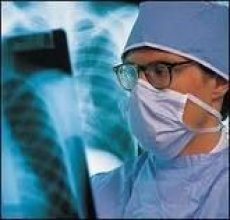New publications
WHO warns of possible epidemic of drug-resistant tuberculosis
Last reviewed: 30.06.2025

All iLive content is medically reviewed or fact checked to ensure as much factual accuracy as possible.
We have strict sourcing guidelines and only link to reputable media sites, academic research institutions and, whenever possible, medically peer reviewed studies. Note that the numbers in parentheses ([1], [2], etc.) are clickable links to these studies.
If you feel that any of our content is inaccurate, out-of-date, or otherwise questionable, please select it and press Ctrl + Enter.

An increase in the incidence of drug-resistant tuberculosis has been recorded in European countries, Zsuzsanna Jakab, director of the regional bureau of the World Health Organization (WHO), said, AFP reports.
Some strains of mycobacteria that cause tuberculosis have developed resistance to various drugs. The most dangerous are pathogens with multiple drug resistance (MDR), which are not affected by isoniazid and rifampicin. Superresistant mycobacteria, in addition to MDR, are insensitive to fluoroquinolones and one of the injectable drugs (amikacin, kanamycin or capreomycin).
According to WHO, about 440 thousand people are infected with drug-resistant tuberculosis every year. In Europe, more than 80 thousand cases of MDR-TB are registered per year.
There are no precise data on the number of people with super-resistant tuberculosis, as most countries do not have specialized laboratories to determine the type of mycobacterium sensitivity to treatment. However, the WHO reports that the incidence of super-resistant forms of the infection doubled between 2008 and 2009.
In this regard, the international organization has planned a campaign to prevent the development of drug resistance in mycobacteria. WHO specialists have called on doctors to prescribe adequate therapy in each specific case, and for patients to strictly adhere to the prescribed treatment. In their opinion, these steps will allow for the treatment of about 127 thousand patients with drug-resistant tuberculosis, as well as prevent the death of 120 thousand patients by 2015.
